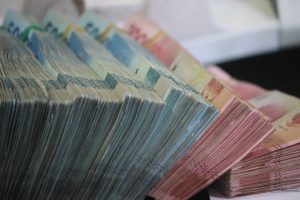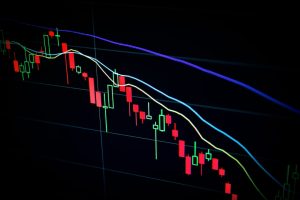Forex, or foreign exchange trading, is the process of buying and selling currencies with the aim of making a profit. It is the largest financial market in the world, with an average daily trading volume of $5.3 trillion. Forex trading is conducted 24 hours a day, 5 days a week, across different time zones, giving traders the opportunity to trade whenever they want.
How forex trading works
Forex trading involves two currencies, known as a currency pair. For example, the EUR/USD currency pair represents the euro and the US dollar. When trading forex, traders buy one currency and sell another currency at the same time. The difference between the two currencies is known as the exchange rate.
The exchange rate is the price at which one currency can be exchanged for another currency. For example, if the exchange rate between the EUR/USD currency pair is 1.20, it means that 1 euro can be exchanged for 1.20 US dollars. The exchange rate is constantly changing, influenced by various factors such as economic data, political events, and market sentiment.
Forex trading involves speculating on the direction of the exchange rate. Traders can buy a currency pair if they believe the exchange rate will rise in the future, or sell a currency pair if they believe the exchange rate will fall in the future.
Forex trading platforms
Forex trading is done through a brokerage firm that provides a trading platform. The trading platform allows traders to access the forex market and place trades. The platform provides real-time exchange rates, charts, and other tools to help traders analyze the market and make informed trading decisions.
Forex brokers offer different types of trading platforms, such as desktop platforms, web-based platforms, and mobile platforms. Each platform has its own features and capabilities, and traders can choose the platform that best suits their needs.
Forex trading strategies
Forex trading involves different types of strategies, depending on the trader’s goals and risk tolerance. Some popular forex trading strategies include:
1. Scalping – This strategy involves making multiple trades within a short period of time, aiming to profit from small price movements.
2. Day trading – This strategy involves opening and closing trades within a day, aiming to profit from intraday price movements.
3. Swing trading – This strategy involves holding positions for several days or weeks, aiming to profit from medium-term price movements.
4. Position trading – This strategy involves holding positions for several months or even years, aiming to profit from long-term price movements.
Forex trading risks
Forex trading involves risks, and traders should be aware of these risks before entering the market. Some of the risks involved in forex trading include:
1. Market risk – Forex prices can be volatile, and traders can experience significant losses if they make the wrong trading decisions.
2. Leverage risk – Forex trading involves using leverage, which can amplify gains or losses. Traders should be aware of the risks of using leverage and use it wisely.
3. Counterparty risk – Forex trading involves dealing with a broker, and traders should choose a reputable broker to minimize the risk of fraud or bankruptcy.
4. Operational risk – Forex trading involves using a trading platform, and traders should ensure that the platform is reliable and secure.
Conclusion
Forex trading is a complex and dynamic market, with many opportunities for traders to profit. However, it also involves risks, and traders should be aware of these risks before entering the market. By using a reputable broker, choosing the right trading platform, and using a solid trading strategy, traders can increase their chances of success in the forex market.





